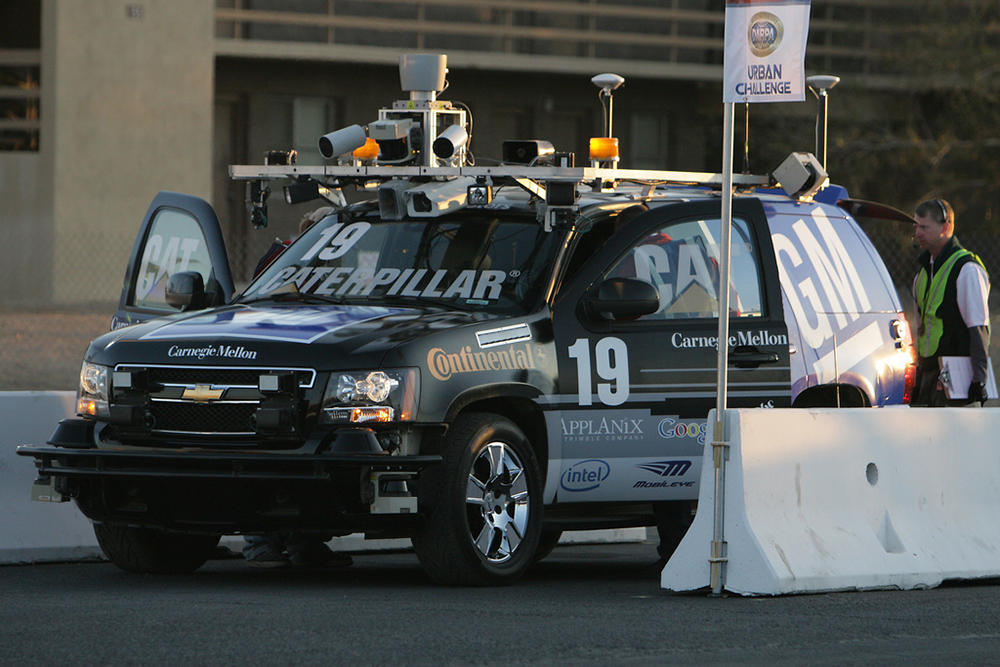Researchers propose how we can we measure and monitor tire wear with tire wear sensors, increasing safety on the road, saving drivers money, and ultimately, saving lives.
Has your car ever lost traction with the road during inclement weather? When car tires wear out, they pose a huge safety threat to vehicles and drivers. Although the lifespan of a tire depends on many factors, like the type of vehicle, driver habits, road conditions, and tire brand, drivers are encouraged to change their tires when the tread wears out.

It was during a visit to Bridgestone Americas Technical Center in Akron, Ohio that researchers from Carnegie Mellon University; Akarsh Prabhakara, Vaibhav Singh, Swarun Kumar, and Anthony Rowe, came across this interesting problem: How can we measure and monitor tire wear? Today, every car has tire pressure sensors. But what if they also had tire wear sensors? This would increase safety on the road, save drivers money, and ultimately, save lives.
- Carnegie Mellon University This work is licensed under a Creative Commons Attribution-NonCommercial-ShareAlike 4.0 International License. Facebook Twitter YouTube Rss Email LinkedIn.
- Carnegie Mellon University School of Music, Pittsburgh, PA. 6,166 likes 11 talking about this 2,845 were here. The School of Music combines the strengths of a professional conservatory program.
- Carnegie Mellon University is proud to present 88 papers at the 34th Conference on Neural Information Processing Systems (NeurIPS 2020), which will be held virtually this week. Our faculty and researchers are also giving invited talks at 7 workshops and are involved in organizing 14 workshops at the.
- Furthermore, Carnegie Mellon University does not discriminate and is required not to discriminate in violation of federal, state, or local laws or executive orders. Inquiries concerning the application of and compliance with this statement should be directed to the university ombudsman, Carnegie Mellon University, 5000 Forbes Avenue, Pittsburgh.
“Wear measurement today is either done manually with a coin, or using full resolution laser scans,” said Akarsh Prabhakara, Ph.D. student in electrical and computer engineering. “Neither of these techniques provide a convenient solution to mount on a car and to deal with different kinds of debris that may stick in the tire over time. Designing a wear sensor is challenging.”
They started working on this problem in October 2018 in collaboration with Bridgestone. After experimenting with different technologies, their solution uses a radar device mounted in the tire well that emits radio waves at the tire to measure wear. This technology is similar to the radar used in air traffic control towers and aircrafts.
Carnegie Mellon University (CMU) is a private research university based in Pittsburgh, Pennsylvania.Founded in 1900 by Andrew Carnegie as the Carnegie Technical Schools, the university became the Carnegie Institute of Technology in 1912 and began granting four-year degrees.
Recently, they presented their work at ACM MobiSys 2020, winning Best Paper Honorable Mention and the Best Demo awards.
“Millimeter wave radars are common in vehicles today,” said Prabhakara. “It’s used for collision avoidance, cruise control, and other such features. Our system repurposes these radars for tire wear sensing.”
The radar data is processed using a technique called Inverse Synthetic Aperture Radar. This technique exploits the natural rotation of the tire and boosts the resolution of commodity radars to be able to measure millimeter changes in tire wear. This technology also includes special metallic structures stuck in the groove serving as markers and ensuring that the radar still receives important reflections even when dust, snow, or similar debris gets accumulated in the grooves. In addition to tire wear sensing, their system also tackles another important problem—detecting and localizing harmful, foreign objects, like nails.
Carnegie Mellon U
Our ultimate goal is to save lives.

 Akarsh Prabhakara, Ph.D. student, Electrical and Computer Engineering
Akarsh Prabhakara, Ph.D. student, Electrical and Computer Engineering“This technology provides a sensing infrastructure which can measure tire wear accurately, without embedding any sort of electronics in the tire and being resilient to debris,” said Prabhakara. “Our ultimate goal is to save lives.”
Carnegie Mellon University
Read the paper here.


Comments are closed.